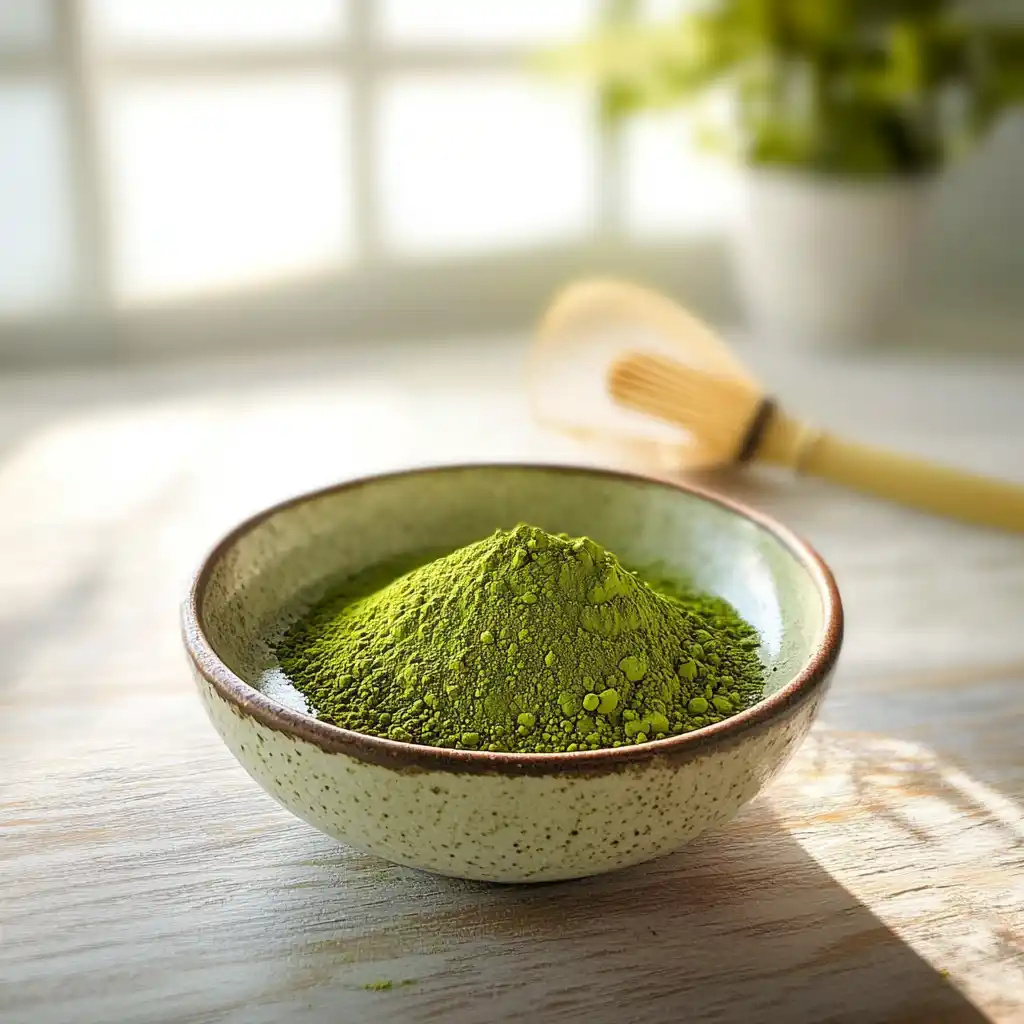Welcome to the ultimate matcha tea guide, your go-to resource for understanding everything about this vibrant green super-tea. If you’ve ever sipped on a creamy matcha latte or wondered why matcha is trending in wellness circles, you’re not alone. This matcha tea guide will walk you through the magic behind the powder — from its ancient roots in Japanese culture to modern-day health benefits, preparation techniques, and must-know tips for getting it right.
For me, matcha isn’t just a health trend — it’s a part of a lifestyle that values simplicity, ritual, and nourishment.
My love for cooking began in a tiny sunlit kitchen tucked in the heart of a coastal town. It was the kind of place where the scent of rosemary floated through open windows, and time slowed down just enough to enjoy the little things. I grew up surrounded by strong women who believed food wasn’t just about feeding people — it was about sharing love, creating memories, and bringing comfort. My mother always said, “A warm meal can say what words sometimes cannot.” That belief is the heart of this matcha tea guide and everything I share here.
I still remember standing on a wooden stool, barely tall enough to reach the counter, helping sprinkle herbs over homemade bread. Now, as someone who’s fallen in love with the art of tea, that same sense of purpose and pride lives on when I prepare a bowl of matcha. There’s something grounding about whisking matcha until it froths — something that brings calm and clarity in just a few sips.
Whether you’re just starting out or deepening your tea journey, this matcha tea guide will cover it all — how to prepare matcha tea correctly, how much to drink, the health benefits, best recipes, and tips to enjoy it daily. You’ll even discover the correct way to drink matcha tea and avoid common mistakes along the way.
Don’t miss our Iced Matcha Latte Guide for a refreshing twist on your traditional tea routine. Now let’s dive into the vibrant world of matcha and make it a daily ritual worth savoring.
Table of Contents
What Is Matcha Tea and Why Is It So Popular?
The Origins of Matcha: A Brief History
To truly understand this matcha tea guide, we need to take a step back into the history of this vibrant green tea. Matcha originated in China during the Tang Dynasty but was perfected and embraced in Japan during the 12th century. Japanese monks began cultivating and preparing matcha for meditation practices, recognizing its calming effects and ability to enhance focus.
Over time, matcha became the centerpiece of the Japanese tea ceremony, known as chanoyu. These ceremonies turned tea preparation into an art form — a spiritual practice filled with symbolism, mindfulness, and grace. That deep cultural connection is part of what makes this matcha tea guide so essential for anyone who wants to enjoy more than just a beverage — but an experience.
Cultural Significance and Traditional Use in Japan
One of the reasons matcha is so meaningful is its cultural heritage. In Japan, the process of preparing and drinking matcha represents harmony, respect, and tranquility. This matcha tea guide wouldn’t be complete without exploring its roots in the traditional Japanese tea ceremony. Every whisk, every pour, every bowl tells a story. And for centuries, those stories have brought people together in moments of stillness and intention.
Even today, matcha plays a significant role in Japanese households, especially during celebrations and seasonal gatherings. It’s a symbol of warmth and mindfulness — and now, with the help of this matcha tea guide, you can bring that tradition into your own kitchen.
Matcha vs. Green Tea: What’s the Difference?
A common question in any matcha tea guide is how matcha differs from regular green tea. Although both come from the same Camellia sinensis plant, the similarities end there. Matcha is shade-grown, handpicked, and stone-ground into a fine powder. Unlike green tea, where leaves are steeped and discarded, matcha powder is whisked directly into water — meaning you consume the entire leaf.
Let’s break it down in this quick comparison table:
| Feature | Green Tea | Matcha Tea |
|---|---|---|
| Form | Loose leaves or tea bags | Powdered form |
| Preparation | Steeped and strained | Whisked into hot water |
| Leaf Consumption | No | Yes (entire leaf consumed) |
| Caffeine Content | 20–30 mg/cup | 60–80 mg/cup |
| Antioxidants | Moderate | High in EGCG, chlorophyll, L-theanine |
| Flavor | Mild, grassy | Rich, earthy, smooth umami |
By consuming the whole leaf, you’re getting more antioxidants, more amino acids, and more nutrients — all of which contribute to matcha’s powerful effects. This matcha tea guide is designed to help you understand these benefits in depth and empower you to make informed, healthy choices.
Want to explore more about tea benefits? Check out our Green Tea Drink Recipe for a Healthy Boost to see how matcha compares with other teas.
Why Matcha Is Suddenly Everywhere
If you’ve noticed matcha showing up in everything from lattes and smoothies to skincare and desserts, you’re not imagining it. This matcha tea guide exists because matcha has become a global trend — and it’s here to stay. Why? Because people are looking for clean, natural sources of energy and calm. Matcha delivers both — with no crash, no jitters, and a whole lot of antioxidants.
It’s not just about health either. There’s an emotional appeal to preparing matcha — a quiet ritual in a loud world. As this matcha tea guide shows, making matcha can be a moment of peace in your morning routine, a chance to breathe and be present.
Print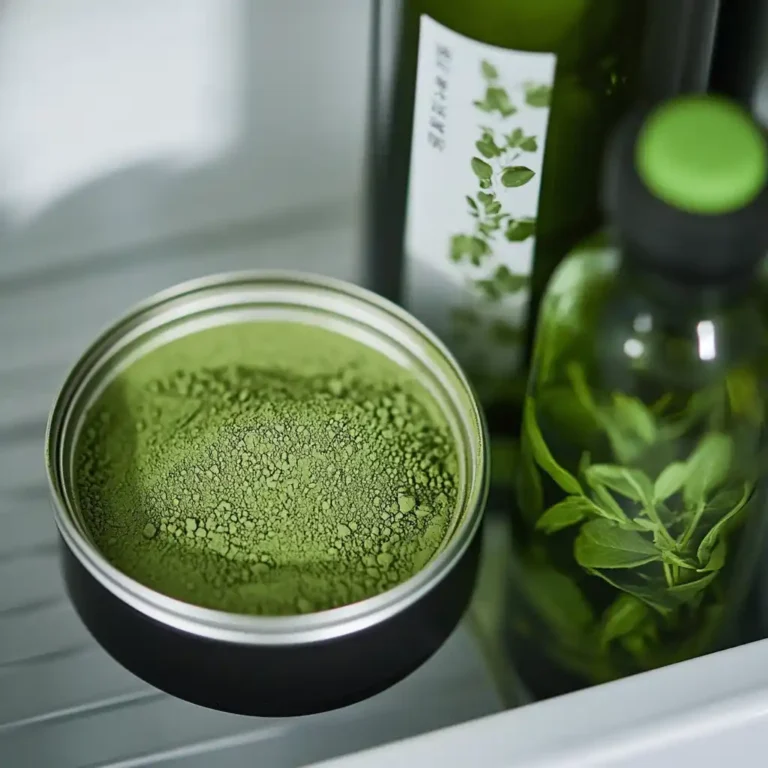
Matcha Tea Guide – The Complete Beginner-Friendly
Your ultimate guide to matcha — from traditional tea ceremonies to lattes, smoothies, and beyond. Learn how to prepare matcha correctly, understand its health benefits, and discover delicious ways to enjoy this vibrant green super-tea every day.
- Total Time: 5 minutes
- Yield: 1 serving
Ingredients
- 1 tsp ceremonial grade matcha powder
- 2 oz hot water (160–175°F)
- 6 oz steamed milk (optional, for latte)
- Ice cubes (for iced version)
- Sweetener to taste (honey, maple syrup, stevia)
Instructions
- Sift matcha powder into a bowl using a fine mesh sifter.
- Heat water to 160–175°F (avoid boiling).
- Pour water over matcha and whisk briskly in an M or W motion using a bamboo whisk until frothy.
- To make a latte, pour into a mug and top with steamed milk.
- For an iced matcha latte, whisk matcha with warm water, then pour over ice with cold milk and sweetener.
- Enjoy immediately and store matcha powder in an airtight container in the fridge.
Notes
Use ceremonial grade matcha for drinking and culinary grade for baking or smoothies. Limit to 1–2 servings per day. Always store matcha in a cool, dark place or the fridge to preserve freshness.
- Prep Time: 5 minutes
- Cook Time: 0 minutes
- Category: Drinks
- Method: No Cook
- Cuisine: Japanese
Want a fun twist on your tea routine? Don’t miss our Iced Strawberry Matcha Latte Recipe for a sweet, Instagram-worthy version of your daily matcha.
Matcha Tea Health Benefits Backed by Science
Antioxidants and Nutrients in Matcha
One of the biggest reasons matcha has become a wellness essential — and why this matcha tea guide exists — is its unmatched concentration of antioxidants. In fact, matcha contains up to 137 times more antioxidants than regular green tea. That’s thanks to the fact that you consume the entire leaf rather than steeping and discarding it.
The superstar antioxidant in matcha is EGCG (epigallocatechin gallate), which has been linked to a wide range of health benefits, including:
- Reducing inflammation
- Supporting cellular health
- Boosting metabolism
- Slowing down aging signs
Matcha is also rich in:
- Chlorophyll, which supports detoxification
- L-theanine, a rare amino acid that promotes calm focus
- Vitamin C, which strengthens your immune system
- Iron and potassium, for better oxygen flow and hydration balance
These compounds work together to make matcha a natural powerhouse for daily wellness. Drinking even one cup a day can help protect your body from oxidative stress while promoting inner balance.
Looking for inspiration? Try our Lemon Balm Recipe for Weight Loss, another calming herbal remedy with antioxidant support.
How Matcha Supports Energy, Focus, and Metabolism
Unlike coffee, which often delivers a quick high followed by a crash, matcha offers clean, sustained energy. That’s because of its balanced combination of natural caffeine and L-theanine, which together create a unique effect: alert calmness.
Here’s how it works:
- Caffeine in matcha (about 70 mg per cup) stimulates your nervous system, improving focus and performance.
- L-theanine counteracts the jitteriness and crash, promoting mental clarity without tension.
This is why matcha is beloved by students, entrepreneurs, athletes, and anyone who needs to stay mentally sharp for hours without overstimulation.
Matcha also helps rev up your metabolism. Several studies suggest that the EGCG in matcha may increase thermogenesis — the body’s rate of burning calories. That makes matcha a favorite among those pursuing weight loss or fat-burning goals.
Discover great ideas like our Himalayan Pink Salt Weight Loss Trick, another holistic tool to support your metabolic health.
Weight Loss and Detox Effects of Matcha Tea
This matcha tea guide wouldn’t be complete without highlighting how matcha supports detox and digestion. The bright green color of matcha comes from its high chlorophyll content, a compound known to cleanse the liver and flush out toxins.
Here’s how matcha aids natural detox and weight control:
- Encourages better digestion and gut health
- Helps regulate blood sugar levels
- Reduces water retention and bloating
- Supports liver function for better fat processing
For those cutting back on sugary energy drinks, matcha is a natural alternative that nourishes while it energizes.
Want a detox-friendly matcha treat? Don’t miss our Iced Matcha Latte Guide for a refreshing, low-calorie option that’s easy to whip up at home.
How to Prepare Matcha Tea Correctly
If you’re diving into this matcha tea guide with excitement, you’re not alone — but one of the most important steps is learning how to prepare matcha tea the right way. Done correctly, matcha delivers a smooth, velvety, and rich experience. Done wrong? You’ll end up with bitter clumps and a disappointing cup.
Let’s make sure your matcha ritual starts off right.
Tools You Need: Whisk, Bowl, and Sifter
To follow this matcha tea guide to the letter, you’ll need a few traditional tools. Here’s what to gather before preparing your tea:
| Tool | Description | Why It Matters |
|---|---|---|
| Chawan | A wide, round matcha bowl | Allows enough space to whisk vigorously |
| Chasen | A bamboo whisk with 80–120 thin prongs | Creates frothy, evenly mixed tea |
| Chashaku | A bamboo scoop used to measure matcha powder | Ensures consistent serving sizes |
| Fine Sifter | Mesh strainer for breaking up powder clumps | Guarantees a smooth, lump-free texture |
| Thermometer | (Optional) Ensures water isn’t too hot | Preserves flavor and nutrients |
Many modern tea lovers also use milk frothers, electric whisks, or blender bottles, especially when making iced matcha lattes. But if you’re looking for the traditional approach, start with the tools above.
Step-by-Step Instructions to Make Traditional Matcha
This part of the matcha tea guide is essential for beginners. Here’s a foolproof way to prepare a perfect bowl of matcha:
- Sift the matcha powder. Use your sifter to break up clumps. Place 1–2 scoops (about 1 tsp) into your chawan.
- Heat water. Aim for 160–175°F (70–80°C). Avoid boiling water, which scorches the tea and makes it bitter.
- Add water to matcha. Pour about 2 oz (60 ml) of hot water into the bowl.
- Whisk vigorously. Using the chasen, whisk in a zigzag “M” or “W” motion until frothy. This usually takes 15–20 seconds.
- Enjoy immediately. Sip slowly, taking in the aroma and savoring the creamy, umami flavor.
Want a cold version? Whisk the matcha in a little warm water first, then pour over ice and add cold water or milk.
Common Mistakes to Avoid When Preparing Matcha
Even seasoned matcha drinkers make these missteps. Let this matcha tea guide help you steer clear of them:
- Using boiling water – It burns the powder and ruins the taste.
- Skipping the sifter – Leads to clumps and uneven flavor.
- Not whisking enough – Weak froth = weak taste and texture.
- Wrong matcha grade – Using culinary matcha for drinking can taste bitter.
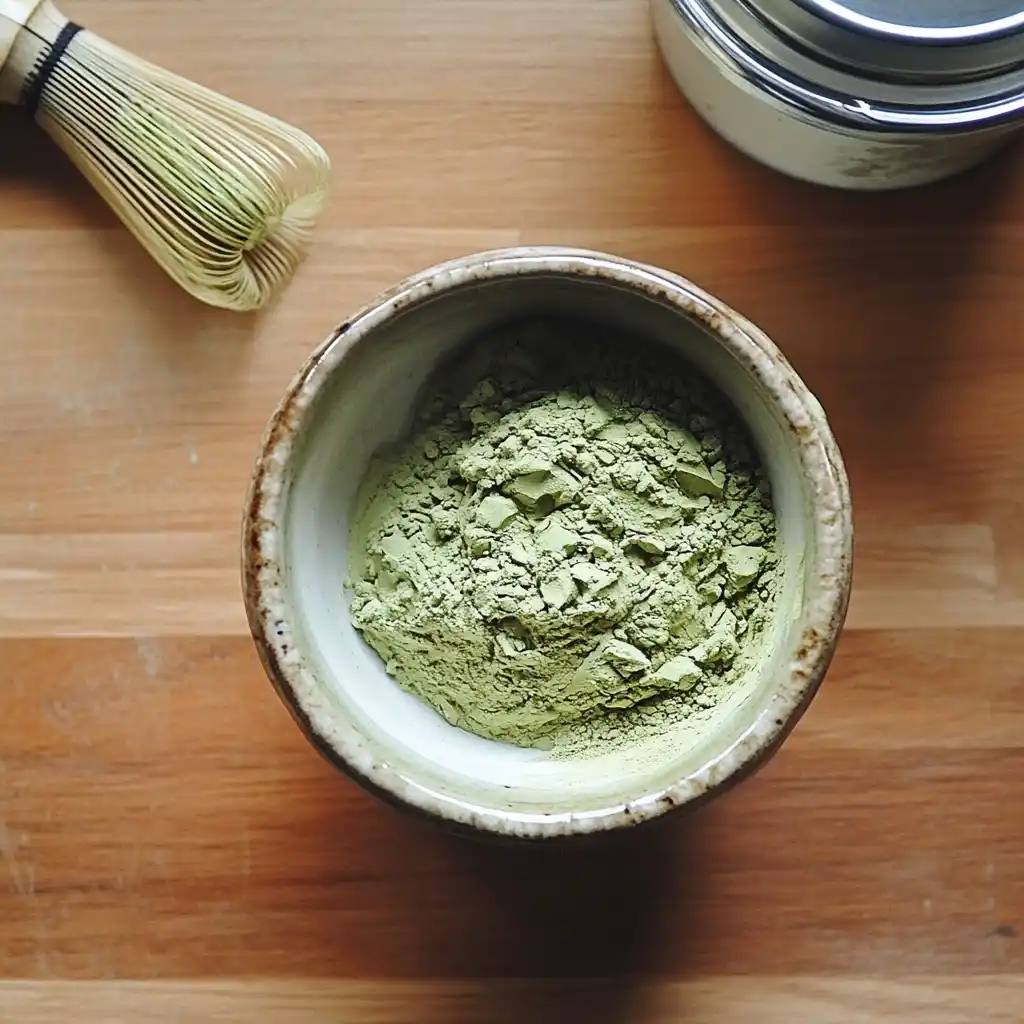
Bonus Tip: Always store your matcha in an airtight, light-proof container in the fridge to maintain freshness and flavor.
Different Types and Grades of Matcha
As we continue this matcha tea guide, it’s crucial to understand that not all matcha is created equal. In fact, the type and grade of matcha you choose can completely change your drinking experience. Whether you’re using it for sipping, baking, or blending, the grade matters — both in taste and nutrition.
Let’s break it down so you know exactly what to buy, and when.
Ceremonial vs. Culinary Grade: Which Should You Use?
The two main categories of matcha you’ll encounter in any matcha tea guide are ceremonial grade and culinary grade.
| Grade | Ceremonial Matcha | Culinary Matcha |
|---|---|---|
| Use Case | Drinking straight (traditional tea) | Cooking, baking, lattes, smoothies |
| Color | Bright, vibrant green | Duller, olive or yellow-green |
| Flavor | Smooth, naturally sweet, umami-rich | Bitter, earthy, more astringent |
| Texture | Silky, ultra-fine powder | Slightly coarse in texture |
| Price | Higher (premium leaves, hand-picked) | Lower (includes more stem/fiber) |
For those following this matcha tea guide for wellness and daily tea rituals, ceremonial grade is the best choice. It delivers a clean, fresh, and rich flavor. But for baking or smoothies, culinary grade matcha works just fine — and saves you money.
When in doubt, check the label and reviews to confirm the grade, or simply try both to compare.
How to Read Matcha Labels and Understand Sourcing
A proper matcha tea guide should teach you how to decode matcha labels. Here’s what to look for when buying high-quality matcha:
- Origin: Look for matcha grown in Japan — especially from regions like Uji, Nishio, or Shizuoka. These are known for superior soil and traditional farming methods.
- Shade-grown: The best matcha is grown in the shade for 20–30 days before harvest, which increases chlorophyll and L-theanine.
- Stone-ground: Traditional stone grinding protects the nutrients and ensures ultra-fine powder.
- Harvest Date: The fresher the matcha, the better. Always look for current-year harvests.
Avoid matcha that’s overly cheap, from non-Japanese origins, or bright yellow in tone. If you’re serious about wellness, this part of the matcha tea guide will help you make informed, health-focused choices.
Looking for tea blends that energize and detox naturally? Check out our Best Natural Alternatives to Energy Drinks, featuring matcha and more.
Best Brands and Where to Buy High-Quality Matcha
To wrap up this section of the matcha tea guide, here are a few signs you’re buying from a reputable source:
- Transparent sourcing: The brand should name the region and farm.
- No additives: Good matcha should be 100% pure green tea powder — nothing else.
- Packaging: Opt for resealable, light-blocking pouches or tins.
- Customer reviews: Favor brands with strong testimonials and third-party testing.
Trusted matcha brands include:
- Ippodo Tea (Kyoto, Japan)
- Matchaful (organic, shade-grown)
- Encha (USDA organic, ceremonial)
- Jade Leaf Matcha (affordable and reliable)
Many premium matcha brands are now available online or at natural food stores. Make sure to buy small amounts — matcha degrades quickly, even when stored properly.
The Correct Way to Drink Matcha Tea
One of the most frequently asked questions in any matcha tea guide is, “Am I drinking matcha the right way?” While there’s room for personal preference, there are traditional and modern techniques that enhance both the experience and health benefits.
In this section, we’ll guide you through the correct way to enjoy your matcha, the ideal time to drink it, and which pairings elevate its effects.
Hot vs. Iced Matcha: Which One Is Better?
Whether you’re sipping a warm bowl or enjoying a cool glass on a sunny day, both hot and iced matcha have their place in this matcha tea guide.
Hot Matcha:
- Best for mornings and quiet rituals
- Helps center your focus and calm your mind
- Retains traditional texture and umami flavor
- Prepared using the classic chawan (bowl) and chasen (whisk)
Iced Matcha:
- Great for afternoons or post-workout refreshment
- Can be made with water, milk, or plant-based alternatives
- Often includes sweeteners or flavor infusions
- Faster to make with electric frothers or shaker bottles
While hot matcha gives you a more meditative experience, iced matcha is practical and refreshing — both are worth including in your daily tea routine.
Looking for inspiration? Don’t miss our Iced Matcha Latte Guide for a barista-style drink you can make at home.
When and How Often Should You Drink Matcha?
As every great matcha tea guide explains, timing matters. Matcha contains caffeine, so it’s best consumed:
- First thing in the morning for sustained energy
- Before a workout for endurance and fat burning
- Midday to avoid afternoon energy dips
Avoid drinking matcha too late in the day, especially if you’re caffeine-sensitive. While matcha’s L-theanine balances the caffeine and helps prevent jitters, you still don’t want it interfering with your sleep cycle.
So how often should you drink matcha? For most people, 1 to 2 servings per day is ideal. This amount gives you the full antioxidant and energy benefits without overdoing the caffeine. A single serving typically uses 1 gram (½ tsp) of matcha powder.
If you’re using matcha in smoothies, baking, or desserts, those portions usually count as partial servings — meaning you can enjoy multiple matcha-infused treats throughout your day.
Best Foods to Pair with Matcha for Health and Taste
To complete this part of your matcha tea guide, let’s talk pairings. Matcha has a unique umami taste — slightly grassy, earthy, and subtly sweet. Pairing it with the right foods can amplify its benefits and balance the flavor profile.
Top matcha pairings:
- Almond or oat milk – Smooths bitterness in lattes
- Dark chocolate – Enhances matcha’s richness with antioxidants
- Citrus fruits – Vitamin C boosts catechin absorption
- Whole grains – Like oat muffins or brown rice for sustained energy
- Nuts and seeds – Healthy fats improve nutrient absorption
Want a tasty way to combine matcha with wellness? Try our antioxidant-packed Lemon Balm Recipe for Weight Loss for a citrusy complement to your tea routine.
Daily Matcha Intake – How Much Is Too Much?
One of the most important (and most Googled) questions answered in this matcha tea guide is: “How much matcha should I drink per day?” While matcha has incredible health benefits, balance is key. Like any source of caffeine or concentrated nutrients, more doesn’t always mean better.
Let’s break down the ideal serving size, the effects of daily matcha use, and how to enjoy it responsibly.
Recommended Matcha Dosage per Day
A standard serving of matcha is 1 gram (about ½ teaspoon) of powder, mixed with 2 to 4 ounces of water. This amount delivers:
- Around 60–80 mg of caffeine
- A high concentration of EGCG antioxidants
- A moderate dose of L-theanine, chlorophyll, and fiber
Most health experts and matcha brands recommend 1 to 2 servings per day for adults. If you’re drinking a matcha latte, baking with matcha, or using it in smoothies, it’s easy to reach this range without overdoing it.
In this matcha tea guide, we emphasize that moderation helps you maximize the benefits — such as clean energy, fat burning, and mental clarity — without pushing your body into caffeine overload.
Looking for a creative second serving idea? Discover our Iced Strawberry Matcha Latte Recipe for an afternoon treat with functional flavor.
What Happens If You Drink Matcha Daily?
One reason matcha stands out in wellness routines is its adaptability. This matcha tea guide supports daily consumption — when done correctly. In fact, drinking matcha every day can:
- Improve cognitive focus and alertness
- Enhance mood and reduce stress (thanks to L-theanine)
- Support weight management through improved metabolism
- Deliver consistent antioxidant support
- Improve skin clarity and reduce inflammation
However, daily matcha can be problematic for a small percentage of people. Side effects may include:
- Upset stomach (especially on an empty stomach)
- Caffeine sensitivity issues (jitters, insomnia)
- Iron absorption interference (from tannins in green tea)
To minimize these effects, drink matcha after a meal or with a light snack, and avoid late-afternoon cups.
Need other low-impact wellness drinks? Don’t miss our Green Tea Drink Recipe for a Healthy Boost, another gentle source of natural energy.
Caffeine in Matcha vs. Coffee: A Healthier Choice?
This wouldn’t be a complete matcha tea guide without comparing matcha to your morning coffee. Let’s settle the debate with facts:
| Beverage | Caffeine per 8 oz | Antioxidants | Crash Risk | Key Benefit |
|---|---|---|---|---|
| Matcha Tea | 60–80 mg | Very high (EGCG) | Low (L-theanine) | Calm, focused energy |
| Coffee | 95–150 mg | Low–moderate | High | Immediate alertness |
Matcha’s caffeine is released slowly, thanks to L-theanine, which buffers the spike and prevents the crash. You’ll feel energized but not anxious — perfect for focused work, yoga, or a midday reboot.
If you’ve been meaning to cut back on coffee, this matcha tea guide encourages starting with just one cup of matcha per day. Your body and mind will thank you.
Delicious Matcha Recipes You Can Make at Home
No matcha tea guide is complete without a collection of recipes that make matcha not only healthy but delicious. The beauty of matcha lies in its versatility — from warm lattes to energizing smoothies and even desserts. Whether you’re a seasoned tea drinker or new to matcha, these easy recipes will help you enjoy its benefits in the most flavorful ways.
Matcha Latte and Iced Matcha Latte Recipes
A classic latte is often the first stop in any matcha tea guide. Here’s how to master both the hot and iced versions at home.
Hot Matcha Latte
Ingredients:
- 1 tsp ceremonial grade matcha
- 2 oz hot water (not boiling)
- 6 oz steamed milk (dairy or plant-based)
- Sweetener to taste (honey, maple syrup, stevia)
Instructions:
- Sift matcha into a bowl.
- Add hot water and whisk until frothy.
- Pour into a mug and top with steamed milk.
- Add sweetener if desired and stir.
Iced Matcha Latte
Ingredients:
- 1 tsp matcha powder
- 2 oz warm water
- 6 oz cold milk or milk alternative
- Ice cubes
- Sweetener (optional)
Instructions:
- Whisk matcha with warm water until smooth.
- Fill a glass with ice.
- Add matcha mix, pour milk over, and stir.
- Add sweetener and enjoy cold.
Check out our full Iced Matcha Latte Guide for flavor variations and pro tips.
Matcha Smoothies, Energy Bites, and Desserts
This matcha tea guide wouldn’t be complete without snacks and treats that keep you fueled throughout the day. Matcha works great in:
- Green smoothies with banana, spinach, and almond milk
- Energy bites made with oats, dates, and coconut
- Chia puddings infused with coconut milk and matcha
- Homemade popsicles for summer — mix yogurt, honey, and matcha
Matcha Energy Bites Recipe
Ingredients:
- 1 cup rolled oats
- ½ cup nut butter
- ¼ cup honey or agave
- 1 tbsp matcha powder
- ¼ cup shredded coconut
Instructions:
- Combine all ingredients in a bowl.
- Mix until evenly coated.
- Roll into 1-inch balls and chill for 20–30 minutes.
- Store in fridge for up to 1 week.
Looking for a balanced sweet snack? Pair your matcha energy bites with our Lemon Balm Recipe for Weight Loss — a calming drink with citrusy notes that complement matcha.
Creative Ways to Use Matcha in Cooking and Baking
You can also get adventurous with matcha. This matcha tea guide encourages creativity in the kitchen — here are some exciting ideas:
- Matcha pancakes or waffles – Add 1 tsp matcha to your batter
- Matcha buttercream frosting – Bright green and slightly earthy
- Matcha yogurt bowls – Stir into Greek yogurt and top with granola
- Matcha salad dressing – Blend with olive oil, lemon juice, and honey
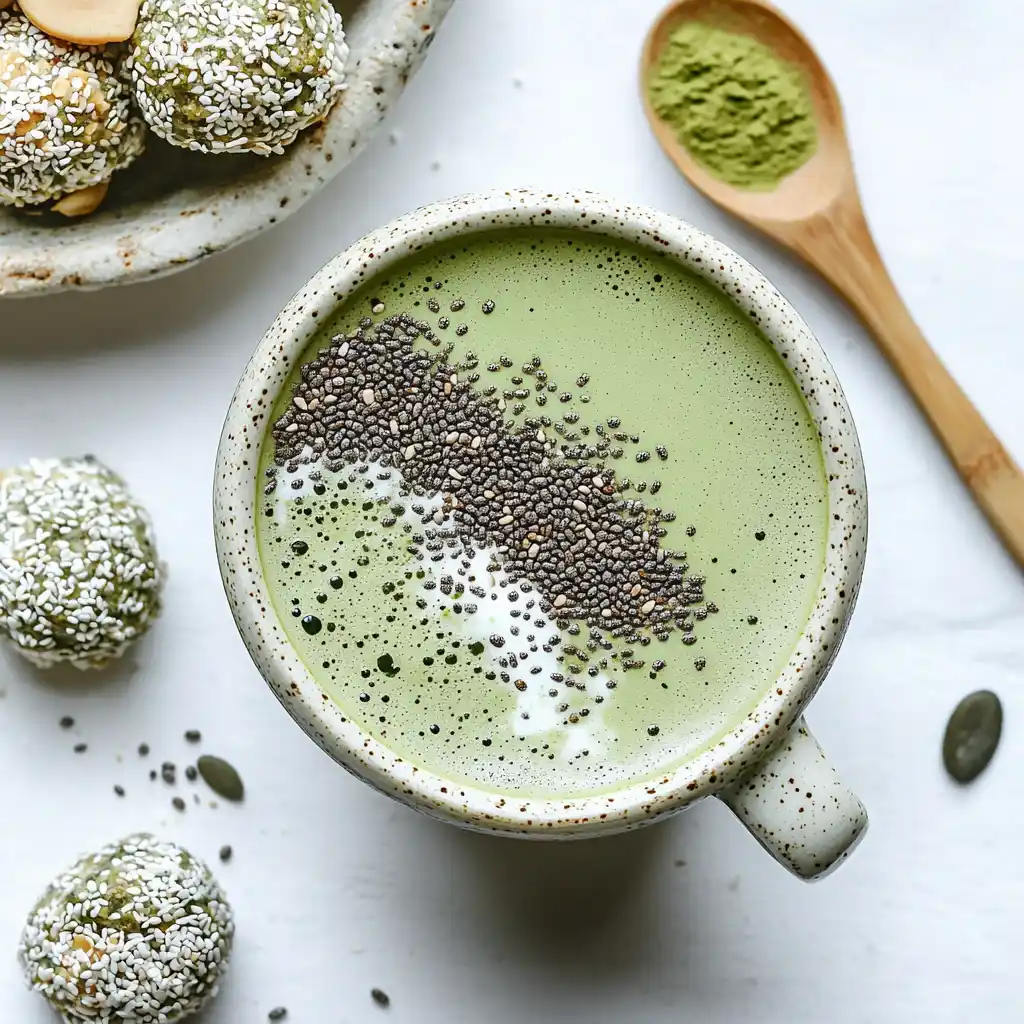
Experimenting with these recipes is a great way to build your own matcha routine — one that suits your taste buds and supports your health goals.
Storing and Maintaining Your Matcha Tea Quality
You’ve followed this matcha tea guide through selection, preparation, and recipes — now it’s time to protect your investment. Matcha is delicate. Exposure to air, light, moisture, or heat can cause it to lose flavor, color, and nutritional value quickly. Proper storage isn’t optional — it’s essential.
Here’s how to keep your matcha tea vibrant, fresh, and full of benefits from the first scoop to the last.
How to Store Matcha to Preserve Freshness
Storing matcha correctly ensures you retain all the antioxidants and rich umami flavor that define this ceremonial powder. Follow these tips from the matcha tea guide:
- Use an airtight container. Once opened, always reseal your matcha in a container that blocks out air. Oxygen degrades matcha rapidly.
- Keep it in a cool, dark place. Light and heat cause oxidation, leading to a yellow or brownish color and dull flavor.
- Refrigerate for longer shelf life. While not mandatory, refrigeration helps keep matcha fresh longer — especially if you buy in bulk.
- Avoid moisture. Never store matcha near the stove, sink, or kettle. Moisture can cause clumping and mold.
Pro tip: If you’re using the original pouch, place it inside a dark tin or jar to block out light and double the protection.
Looking for matcha storage ideas? Check out our Best Natural Alternatives to Energy Drinks — where we also discuss the role of freshness in herbal blends.
Signs Your Matcha Has Gone Bad
As every well-rounded matcha tea guide will tell you, old or expired matcha won’t harm you, but it won’t help you either. Here’s how to spot low-quality or spoiled matcha:
| Sign of Spoilage | What It Means |
|---|---|
| Dull or olive green color | Antioxidants have degraded |
| Bitter, harsh taste | Over-oxidation or low-grade |
| Clumpy texture | Moisture exposure |
| Loss of aroma | Flavor and nutrients faded |
Fresh matcha should smell grassy, almost sweet, and feel silky to the touch. If it smells flat or looks yellowish, it’s time to toss it.
Can You Freeze Matcha Powder for Long-Term Use?
Some matcha lovers wonder whether freezing matcha is a smart move. This matcha tea guide says: only if done right.
Freezing matcha can help preserve it for months, but only if:
- It’s in a vacuum-sealed or ultra-airtight container
- You let it come to room temperature before opening, to prevent condensation
- You don’t open it repeatedly — freeze in single-use or weekly portions
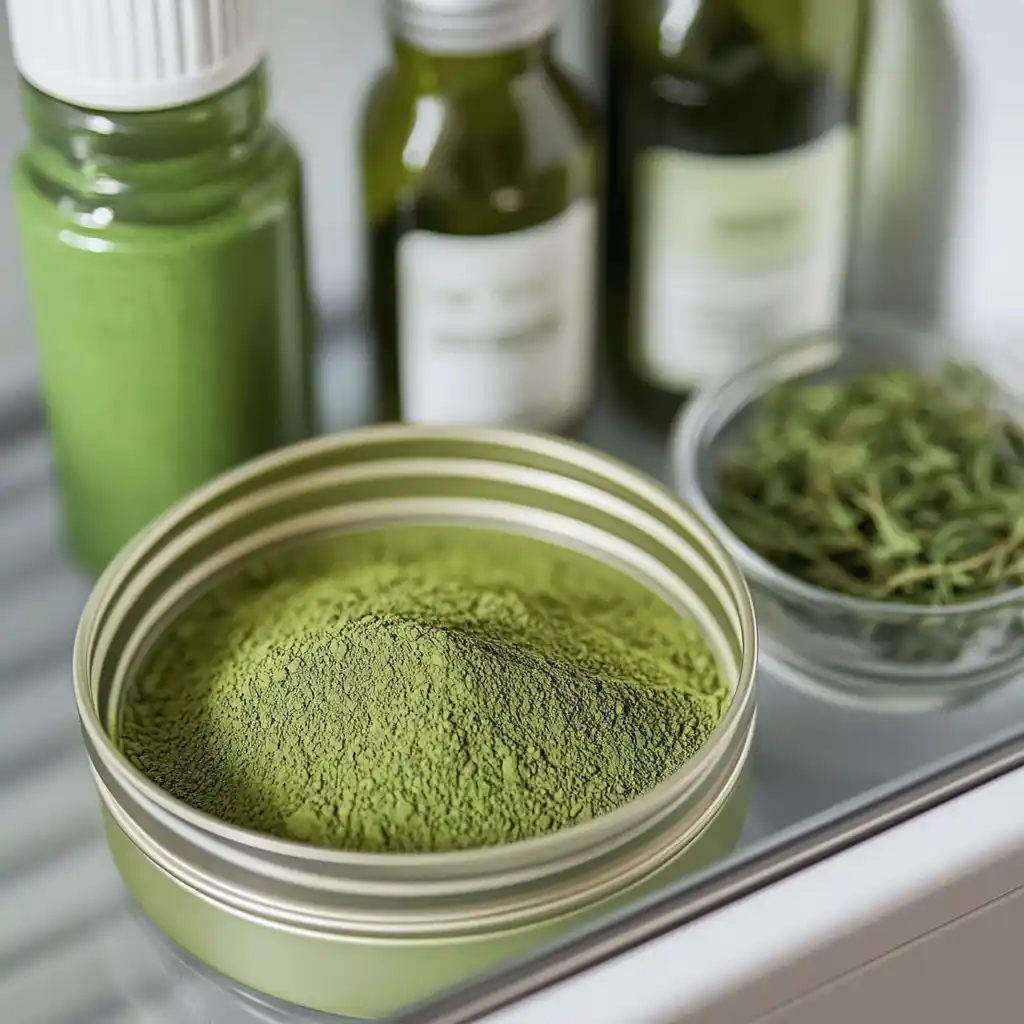
For everyday use, refrigeration is safer. But freezing is helpful for stocking up on seasonal or imported matcha.
Matcha Tea Buyer’s Checklist and Eco-Friendly Choices
As this matcha tea guide comes to a close, it’s time to focus on how to buy matcha smartly — and responsibly. With so many brands and buzzwords out there, shopping for matcha can be overwhelming. Whether you’re browsing a local market or ordering online, knowing what to look for ensures you’re getting the best flavor, quality, and value.
And just as importantly, your choices can support sustainable farming practices that protect the planet.
How to Identify Authentic Matcha Online or In Stores
When shopping for matcha, don’t rely on price or packaging alone. This matcha tea guide lays out a quick checklist to help you spot high-quality matcha at a glance:
✅ Grown in Japan – Especially Uji, Nishio, Shizuoka, or Kyushu
✅ Bright, vibrant green – Indicates freshness and high chlorophyll content
✅ Finely ground powder – Smooth, silky texture (no grittiness)
✅ Smells fresh and grassy – Not flat, fishy, or bitter
✅ Labeled “ceremonial” or “culinary” grade – Depending on use
✅ Shade-grown and stone-ground – The gold standard in matcha production
✅ No added ingredients – Pure matcha should be the only item listed
If you’re unsure about a new brand, buy the smallest size first and test it in a simple recipe like a latte or smoothie.
Looking for more options to support your energy naturally? Don’t miss our Green Tea Drink Recipe for a Healthy Boost — another smart choice to rotate with matcha.
Tips for Choosing Sustainable and Organic Matcha Brands
This matcha tea guide supports not just healthy choices — but ethical ones, too. Here’s how to buy matcha that’s better for the environment and for your body:
- Choose USDA Organic or JAS-certified products – Avoid pesticides and synthetic additives.
- Support brands with direct-trade sourcing – These companies work closely with Japanese farmers and often pay fair wages.
- Look for eco-conscious packaging – Biodegradable, recyclable, or reusable tins help cut down waste.
- Buy in small batches – Freshness is preserved and less product is wasted.
Some brands leading the way in sustainability include:
- Matchaful (USA) – Organic, shade-grown, eco-conscious packaging
- Encha (Kyoto) – USDA organic and 100% traceable farms
- Jade Leaf Matcha – Affordable and farm-direct with verified sourcing
If you’re someone who cares about where your food comes from, this part of the matcha tea guide gives you the tools to shop in line with your values.
Packaging, Sourcing, and Supporting Ethical Tea Farms
Finally, your matcha purchase can make a difference. Choose companies that:
- Highlight farmer stories and regions
- Use minimal, resealable, and protective packaging
- Offer transparency on farming practices and testing for contaminants
- Provide education (like this matcha tea guide) about matcha’s origin and use
Matcha isn’t just a health trend — it’s a tradition that deserves respect and care. And when you buy responsibly, you’re helping preserve centuries of craftsmanship while protecting our environment.
FAQs About Matcha Tea
What is the correct way to drink matcha tea?
How to prepare matcha tea correctly?
What happens if I drink matcha daily?
How much matcha should I put in my tea?
Conclusion
This complete matcha tea guide has taken you through the origins, benefits, preparation, storage, and even recipes of this incredible green tea powder. Whether you’re here to boost your energy, improve focus, or start a mindful morning ritual, matcha offers a natural and nourishing path to wellness.
From traditional bowls to lattes and baked treats, matcha fits any lifestyle. Now that you’re armed with the knowledge from this guide, you can confidently make matcha a daily habit.

